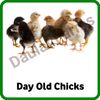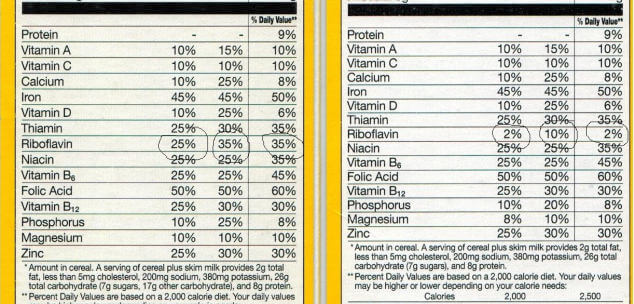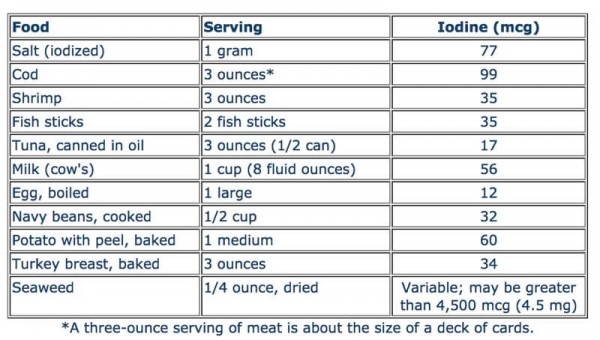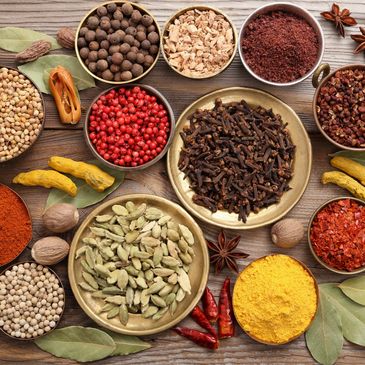41 is iodine listed on nutrition labels
Which of the following vitamins or minerals is not required to be on a ... The only micronutrients that must be listed on a food label are vitamin D, calcium, iron, and potassium. Other vitamins and minerals in the food can be listed voluntarily by food makers. Many nutrients have a daily value expressed as a percentage (percent DV). Next post: Which of the following vitamins or minerals are not important to bone ... Reading Food Labels for a Low Iodine Diet Iodine is not always listed on food labels. Knowing which foods have iodine in them and how to read food labels to find sources of iodine can help you to follow a low iodine diet. How is a radioiodine scan done? You will be given an iodine pill. The iodine will go straight to your thyroid cells, so your doctor can clearly see them.
Labelling requirements for salt - Food labels - Canadian Food ... Nutrition labelling - salt and salt substitutes Salt for table or general household use containing added iodide that is declared on the principal display panel is not required to declare the iodide content in the Nutrition Facts table [B.01.402 (6), FDR].

Is iodine listed on nutrition labels
Managing high iodine levels in milk | Ontario Agri-Food Innovation Alliance Kelton's team is looking at ways to reduce iodine levels in Ontario milk by analyzing mineral content in groundwater, which they found to be the main source of iodine for many of the herds in these high-risk regions of Ontario. Given the large volumes of water cows consume to support their milk production, water can be an important source of ... Does Sea Salt Have Iodine in It? - LIVESTRONG.COM To avoid iodine deficiency, the Food and Nutrition Board recommends that adults get 150 micrograms of iodine every day. For pregnant or nursing women, that number increases to 220 and 290 micrograms, respectively. ... Because the amount of iodine in foods isn't listed on nutrition facts labels, it's often difficult to know how much you're ... Iodine fortification - Food Standards Iodine is a naturally occurring mineral and an essential nutrient for life. It is found in the food we eat and the water we drink. ... Iodised salt must be listed in the ingredient list of food labels where it has been used. Unpackaged bread and bread that is made and/or packaged at the point of sale is not required to be labelled. However ...
Is iodine listed on nutrition labels. FDA regulations regarding iodine addition ... - Nutrition Connect FDA regulations regarding iodine addition to foods and labelling of foods containing added iodine ... The US Food and Drug Administration (FDA) regulates the ... FDA regulations regarding iodine addition to foods and ... Declaration of the percent Daily Value of iodine in the Nutrition Facts label is voluntary. However, if iodine is added to a food, then it is a requirement that the percent Daily Value of iodine be listed. The current Daily Value for iodine is 150 μg for individuals aged ≥4 y. FDA regulations regarding iodine addition to ... - ResearchGate Jul 5, 2022 — If iodine is not listed on the Supplement Facts label, then it has not been added. There are similarities between the FDA, which establishes US ... 22 Foods Highest in Iodine | Health Wholeness A three-ounce serving size of cod provides your body with 99 micrograms of iodine, or 66% of the recommended amount per day. Cod is also a healthy source of protein, calcium, magnesium, potassium, and vitamin E. Serving Size (3 ounces), 99 micrograms of iodine (66% DV) [AdSense-A] [hr] Fortified Iodized Salt
The nutrition facts label on a food package list "iron 50%." What does ... Are you stuck in reading the "iron 50%" label on a food package? Well, the answer to this question is simple. It means that consuming one serving of this food package can help you with 50% of your daily iron requirements. So, if you consume one serving, you are only left with a requirement for a 50% iron requirement. How do you determine a serving? PDF USDA, FDA and ODS-NIH Database for the Iodine Content of Common Foods iodine content and variability for individual foods (Swanson et al., 2012). Workshops that were convened by the Office of Dietary Supplements, National Institutes of Health (NIH) with other scientists in 2011 and 2014, confirmed the need for food composition tables on iodine content (Swanson et al., 2012; Ershow et al., 2018). PDF Nutrition Labeling - FSIS Regulated Foods June 15, 2006 3 Nutrition Labeling and Education Act ∑ Requires what nutrients are listed on label, and how they are to be listed ∑ Defines nutrients ∑ Establishes reference amounts for determining serving sizes ∑ Adopts standardized format ∑ Requires nutrition labeling on most foods that contain more than insignificant amounts of Nutrition Labels 101: What's Required? What's Optional? 5. Trans Fat. Trans fat is the worst of the "bad fats," which is why in 2006 the FDA began requiring it to be listed separately on nutrition labels. Trans fat, like saturated fat, increases LDL cholesterol levels (i.e., "bad" cholesterol) but also lowers HDL cholesterol levels (i.e., "good" cholesterol). So it's a bit of a ...
Nutrition facts label - Wikipedia The nutrition facts label (also known as the nutrition information panel, and other slight variations) is a label required on most packaged food in many countries, showing what nutrients and other ingredients (to limit and get enough of) are in the food. Labels are usually based on official nutritional rating systems.Most countries also release overall nutrition guides for general educational ... Interactive Nutrition Facts Label - Food and Drug Administration Nutrition Facts 4 servings per container Serving size 1 1/2 cup (208g) Amount Per Serving 240 Calories % Daily Value* 5% Total Fat 4g 8% Saturated Fat 1.5g Trans Fat 0g 2% Cholesterol 5mg 19%... Sodium on the Nutrition Facts Label | FDA The Nutrition Facts label is a handy tool you can use every day to see the amount of sodium in packaged foods and beverages and make informed dietary choices. FDA's Education Materials. FDA regulations regarding iodine addition to foods ... - PubMed If iodine is added to a food, the percent Daily Value of iodine must be listed. There are no FDA regulations governing ingredient standards for dietary supplements. As a result, some dietary supplements include iodine and others do not. If a supplement contains iodine, the Supplement Facts label must list iodine as a nutrient ingredient.
9 Foods High in Iodine and Why You Need It - WebMD Just three ounces of cooked oysters can provide up to 93 mcg of iodine, nearly two-thirds of what you need per day. Eggs. Animal sources of iodine are generally the richest sources available, and ...
Iodine Facts and Health Benefits | Nutrition Although iodine is found naturally in soil and seawater, the actual amount of iodine varies from location to location. Since the amount of iodine in a particular product may not be listed on nutrition labels, it may be difficult to determine the actual iodine in a specific food.
Dietary Supplement Labeling Guide: Chapter IV. Nutrition Labeling This results in the following order for vitamins and minerals: Vitamin A, vitamin C, vitamin D, vitamin E, vitamin K, thiamin, riboflavin, niacin, vitamin B6, folate, vitamin B12, biotin,...

http://www.dpharmacy.ie/dpharmacy/health-and-slimming What is iodine for? Foods that iodine is ...
20 Best Iodine-Rich Food Sources | Optimize your Iodine Levels Intake While most adults should have an iodine intake of approximately 150 micrograms (mcg) daily, there is no requirement for food manufacturers to include the iodine content on food labels. However, food products that are specifically fortified with iodine will list the percentage on the label. 1. Sea Vegetables

Father's Formulations – Refresh your Immune system with the best Iodine supplement! Scroll down ...
FDA regulations regarding iodine addition to foods and ... by PR Trumbo · 2016 · Cited by 16 — If a supplement con- tains iodine, the Supplement Facts label must list iodine as a nutrient ingredient. If iodine is not listed on the ...
iodine and food labels - Thyroid Disorders - MedHelp Iodine isn't an "ingredient" so you won't find it on any labels. It is an element or halogen, that is found in certain foods. You won't see "iodine" listed as an ingredient. What you need to watch out for are dairy, soy, salt, fish and their by-products on labels. Have fun! Helpful - 0 Comment sisuhealer
Iodine - Health Professional Fact Sheet FDA does not require food labels to list iodine content unless iodine has been added to the food. Foods providing 20% or more of the DV are considered to be high sources of a nutrient, but foods providing lower percentages of the DV also contribute to a healthful diet.
Interactive Nutrition Facts Label - Food and Drug Administration The Nutrition Facts label can help you learn about the nutrient content of many foods in your diet. The Nutrition Facts label must list: total fat, saturated fat, trans fat, cholesterol, sodium, total carbohydrate, dietary fiber, total sugars, added sugars, protein, vitamin D, calcium, iron, and potassium. The Nutrition Facts label may also list:
PDF Iodine Fact Sheet for Consumers - National Institutes of Health sel, are not usually iodized. Product labels will indicate if the salt is "iodized" or provides iodide. ... The daily upper limits for iodine are listed below. These levels ... People should get most of their nutrients from food, advises the federal government's Dietary Guidelines for Americans. Foods contain vitamins, minerals, dietary ...
Iodine | The Nutrition Source | Harvard T.H. Chan School of Public Health Iodine is found mainly in animal protein foods and sea vegetables, and to a lesser extent in fortified foods like breads, cereals, and milk. Seaweed (nori, kelp, kombu, wakame) Fish, shellfish (cod, canned tuna, oysters, shrimp) Table salts labeled "iodized" Dairy ( milk, cheese, yogurt) Eggs Beef liver Chicken Fortified infant formula
9 Healthy Foods That Are Rich in Iodine Summary Shrimp is a good source of protein and many nutrients, including iodine. Three ounces of shrimp provide approximately 23% of the daily value. 6. Tuna Tuna is also a low-calorie,...
How to Read Nutrition Labels Like a Dietitian There are 4 key elements on the nutrition facts panel that you'll need to be able to interpret to understand the nutritional makeup of the product: serving size, calories, nutrients, and percent Daily Value (% DV.) 1) Serving Size
Low-Iodine Diet | Memorial Sloan Kettering Cancer Center Oct 4, 2021 — Not always. Sodium and iodine aren't the same thing. Most commercial food manufacturers use non-iodized salt in their products. But, it's hard ...
Iodine fortification - Food Standards Iodine is a naturally occurring mineral and an essential nutrient for life. It is found in the food we eat and the water we drink. ... Iodised salt must be listed in the ingredient list of food labels where it has been used. Unpackaged bread and bread that is made and/or packaged at the point of sale is not required to be labelled. However ...
Does Sea Salt Have Iodine in It? - LIVESTRONG.COM To avoid iodine deficiency, the Food and Nutrition Board recommends that adults get 150 micrograms of iodine every day. For pregnant or nursing women, that number increases to 220 and 290 micrograms, respectively. ... Because the amount of iodine in foods isn't listed on nutrition facts labels, it's often difficult to know how much you're ...
Managing high iodine levels in milk | Ontario Agri-Food Innovation Alliance Kelton's team is looking at ways to reduce iodine levels in Ontario milk by analyzing mineral content in groundwater, which they found to be the main source of iodine for many of the herds in these high-risk regions of Ontario. Given the large volumes of water cows consume to support their milk production, water can be an important source of ...











Post a Comment for "41 is iodine listed on nutrition labels"